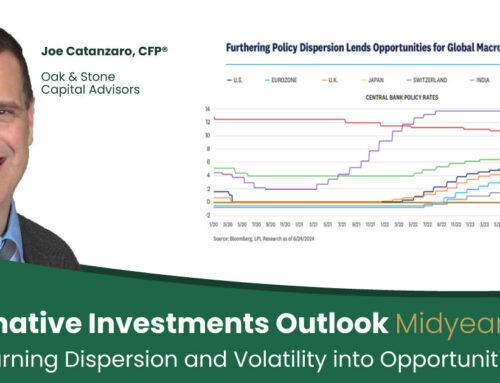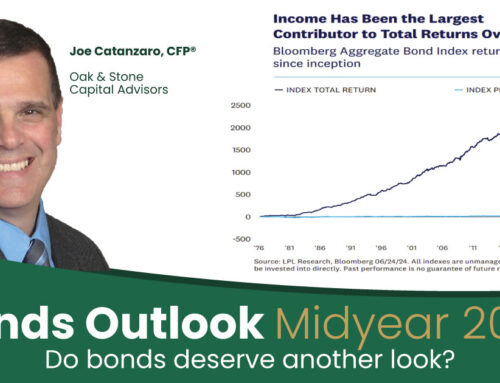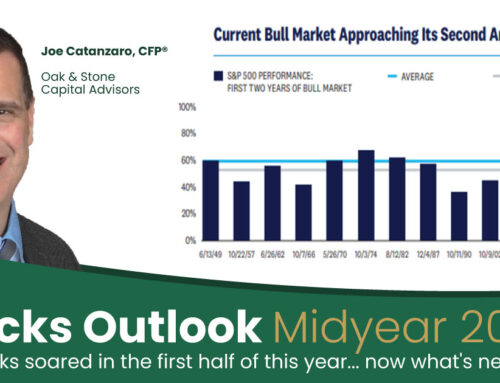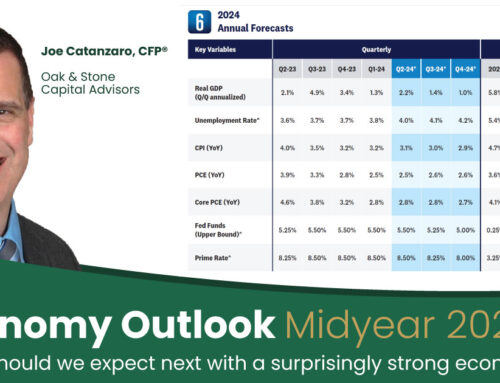Stocks defied the skeptics in a very unpredictable 2023. The Dow Jones finished at an all-time record high on December 28, and the S&P 500 came within a whisker of a fresh all-time high after the index rallied more than 20% for the year.
It wasn’t only stock investors who had plenty to cheer about. Bond portfolios, which struggled mightily along with stocks in 2022, staged a furious late-year rally. Bloomberg’s broad bond market benchmark returned a solid 5.5% for the year after being negative year to date as late as October.
Last year was especially gratifying given the pessimism at the outset. It also offers some important lessons for investors:
- Don’t always follow the herd. They’re right at times, but wrong more often than you think. As recently as May 2023, Wall Street strategists forecasted 4,017 for the S&P 500 at year end—about 19% too low. Stocks rise about three times as often as they fall, so be wary of bearish herds.
- Consider cycles and trends. Stocks rarely fall two years in a row. Year three of the four-year presidential cycle (e.g., 2023) has been the best over time. Bear markets tend to recover losses in under a year in the absence of recession (the last bear ended in October 2022). Historical cycle averages point to mid-to-high single-digit gains for stocks in 2024.
- Don’t bet against the U.S. consumer. Every economic cycle is different, but the post-pandemic recovery distorted the economy such that traditional economic indicators misled many economists. One takeaway here is stimulus matters—for example, low interest rates, stimulus checks, student loan forgiveness, and even infrastructure spending. Another takeaway is that consumers with jobs will spend. The unemployment rate remains near 50-year lows.
- Focus on the long term. This unusual economic cycle made it extremely difficult to predict where stocks were going, reminding us that “time in the market” is a better mantra than “timing the market.” Waiting it out through the down periods, even through wars, a banking crisis, and widespread calls for recession, is the best approach for nearly all investors.
These are all great lessons to tuck away as we turn to 2024. The year may not bring quite as much joy to your portfolio, but with inflation down, unemployment low, corporate fundamentals in good shape, and the Federal Reserve poised to cut interest rates, the ingredients for another profitable year are in place.
We wish you a joyful and prosperous 2024.







